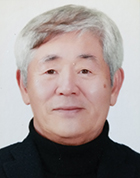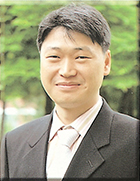
SL-1 Microbiome and Applied Biological Chemistry
Su-il Kim
Professor Emeritus, College of Agriculture and Life Sciences, Seoul National University, Member, The National Academy of Sciences, Republic of Korea
Along with the DNA sequencing method developed by the human genome project, microbiome research has made great progress since the early 2000s, and it has become a term that not only researchers but also the public can easily encounter in their daily life. Now, many researchers have been interested in the study of the microbiome. Applied biological chemistry deals with the scientific aspects of biochemistry/molecular biology, natural products/bioactive compounds/biomedicine, agriculture and environmental science, and food science related to multidisciplinary agriculture. Considering these research fields of applied biological chemistry, microbiome research has already been a very interesting research topic for researchers in this field even before the microbiome research was activated. In this lecture, the study of inulin-derived oligosaccharides, which are already well known as prebiotics, and the study of isoflavone metabolism by human gut microbes are to be delivered. Also, the potential of a leap forward in applied biological chemistry through microbiome research will be discussed.

SL-2 Natural Language Processing Problems and Application Systems
Harksoo Kim
Division of Computer Science and Engineering, Konkuk University, Seoul 05029, Republic of Korea
Problems on natural language processing (NLP) can be categorized into four tasks; classification, extraction, understanding, and generation. In this talk, I introduce some application systems on these NLP tasks. As an application system for the classification task, I will show a fine-grained named entity recognition model for bio-text mining which is trained in GENIA corpus version 3.0 (i.e., 2,000 MEDLINE abstracts semantically annotated with more than 400,000 words and almost 100,000 annotations for biological terms). As an application system for the extraction task, I will show a relation extraction model which automatically extracts knowledge triples from plain texts. The relation extraction model can be used for finding out interactions between various biomedical entities. As an application system for the understanding task, I will show a machine reading comprehension (MRC) model in which a computer reads documents and answers related questions. The MRC model can be used as a fundamental technique for biomedical semantic indexing and question answering. As an application system for the generation task, I will show a generative summarization model which distills the most important information from a source data (i.e., documents, meetings, conversations, and so on). Finally, I will discuss how to leverage these NLP application systems for biomedical studies.
